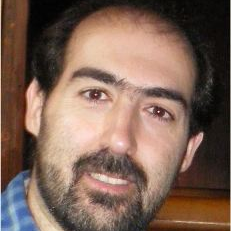10th Anniversary of Applied Sciences: Invited Papers in Nanotechnology and Applied Nanosciences Section
A special issue of Applied Sciences (ISSN 2076-3417). This special issue belongs to the section "Nanotechnology and Applied Nanosciences".
Deadline for manuscript submissions: closed (30 June 2021) | Viewed by 14087
Special Issue Editors
Interests: theoretical solid-state physics; nanosciences; structural; mechanical and electronic properties of carbon nanomaterials
Special Issues, Collections and Topics in MDPI journals
Interests: transmission electron microscopy; EELS; in-situ/in-operando TEM measurements; 2D materials; carbon nanomaterials; boron nitride; nanotubes; electron tomography
Special Issues, Collections and Topics in MDPI journals
Special Issue Information
Dear Colleagues,
The Section "Nanotechnology and Applied Nanosciences" of Applied Sciences covers an important domain of research and development. At present, this field has reached such a mature level that real-life applications of nanosciences have become a reality. Many domains of activities are concerned, ranging from health sciences to the oil industry, including cosmetics, agriculture, aeronautics, communications, energy, etc.
This Special Issue intends to gather moderate-sized review papers featuring important and recent developments or achievements of nanosciences with a special emphasis on real or potential applications. The authors are well-known experts in their domain who are invited to submit their contribution at any moment from now to the end of October 2020. The papers can cover either experimental or theoretical aspects or both. Synthesis, fabrication, manipulation, characterization, etc. of nanostructures, properties of materials in a broad sense containing nanostructures, design of nano-devices, etc. are among the main topics.
Prof. Dr. Philippe Lambin
Prof. Dr. Raul Arenal
Guest Editors
Manuscript Submission Information
Manuscripts should be submitted online at www.mdpi.com by registering and logging in to this website. Once you are registered, click here to go to the submission form. Manuscripts can be submitted until the deadline. All submissions that pass pre-check are peer-reviewed. Accepted papers will be published continuously in the journal (as soon as accepted) and will be listed together on the special issue website. Research articles, review articles as well as short communications are invited. For planned papers, a title and short abstract (about 100 words) can be sent to the Editorial Office for announcement on this website.
Submitted manuscripts should not have been published previously, nor be under consideration for publication elsewhere (except conference proceedings papers). All manuscripts are thoroughly refereed through a single-blind peer-review process. A guide for authors and other relevant information for submission of manuscripts is available on the Instructions for Authors page. Applied Sciences is an international peer-reviewed open access semimonthly journal published by MDPI.
Please visit the Instructions for Authors page before submitting a manuscript. The Article Processing Charge (APC) for publication in this open access journal is 2400 CHF (Swiss Francs). Submitted papers should be well formatted and use good English. Authors may use MDPI's English editing service prior to publication or during author revisions.






